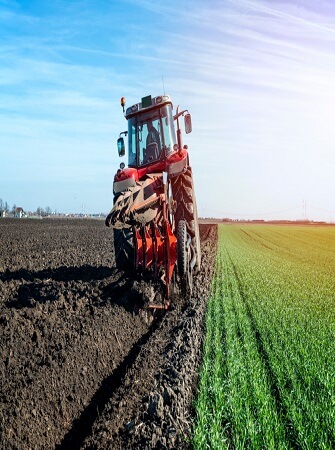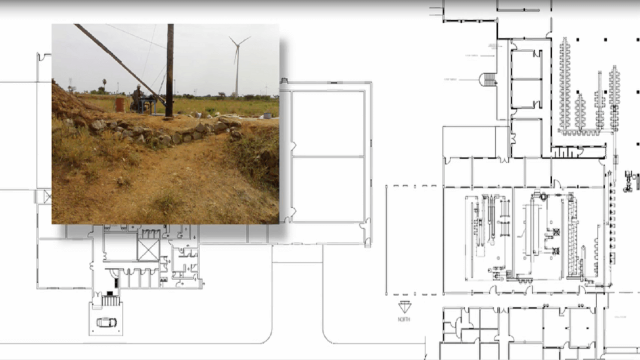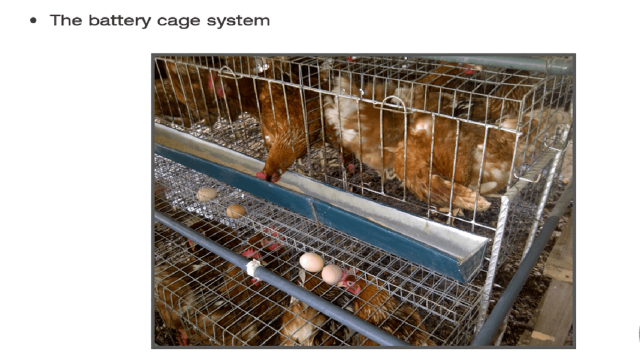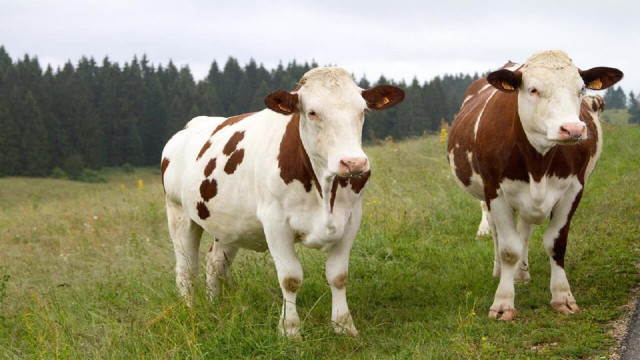
Cassava Crop Nutrition
October 1, 2023, 3:38 pm
To achieve higher cassava crop productivity needed to meet current and future demand, agriculture must, literally, return to its roots by rediscovering the importance of healthy soil, drawing on natural sources of cassava crop nutrition and using mineral fertilizer wisely.
Cassava Crop Nutrition
The over-use of mineral fertilizer in agricultural production has carried significant costs to the environment, including the acidification of soil, the contamination of water, and increased emissions of potent greenhouse gases. More targeted and sparing use of fertilizer would save farmers money and help to ensure that nutrients reach crops and do not pollute air, soil and waterways.
The impact of mineral fertilizer on the environment is a question of management: how much is applied compared to the amount exported with crops, and the method and timing of applications. In other words, it is the efficiency of fertilizer use, especially of nitrogen (N) and phosphorus (P), which determines if this aspect of soil fertility management is a boon for crops or a negative for the environment.
Experience indicates that higher and more sustainable yields are achieved when crop nutrients come from a mix of mineral fertilize rand organic sources, such as animal manure and trees and shrubs which, in dryer climates, can pump up from the subsoil nutrients that would otherwise never reach crops.
Cassava Crop Nutrition
Cassava can grow and produce reasonable yields on soils where many other crops would fail. It is highly tolerant of soils with low levels of phosphorus and can generally grow even with no application of P-fertilizer. That is because cassava has formed a mutually beneficial association with a group of soil fungi called “vesicular-arbuscular mycorrhizae”.
Present in practically all natural soils, mycorrhizae penetrate the cassava root and feed on the sugars it produces. In exchange, the fungi’s long filaments transport phosphorus and micronutrients to the root from a greater volume of the surrounding soil than the root alone could reach. That symbiotic association allows cassava to absorb sufficient phosphorus for healthy growth.
Most of the nutrients absorbed by cassava during growth are found in the plant tops. Returning stems and leaves to the soil – both as leaf litter and as mulch after the root harvest – enriches the soil with new organic matter, and some of the nutrients are re-used by the next crop
Cassava can also be grown on very acidic and low-fertility soils because it tolerates low pH and the associated high levels of exchangeable aluminium. While the yields of crops such as maize and rice are usually affected strongly when the soil pH is below 5 and aluminium saturation is above 50%, cassava yields are normally not affected until the soil pH is below 4.2 and aluminium saturation is above 80%. For that reason, cassava may not require large amounts of lime in acid soils, where other crops would not grow without them.

Cassava Mineral Fertilizer Application
Its ability to produce on low-fertility soils has given rise to the misconception that cassava does not require, nor even respond to, the application of mineral fertilizer. In fact, the results of extensive trials reviewed by United Nation's FAO have shown that many cassava varieties respond very well to fertilization. If anything, cassava’s need for fertilizer is increasing as traditional means of maintaining soil fertility – such as intercropping and the mulching of plant residues – are abandoned under more intensive production systems.
When root yields are high, and residues are not returned to the soil, the harvest removes large amounts of nitrogen and potassium. To sustain both yields and soil fertility, cassava would require annual per hectare applications estimated at 50 to 100 kg of nitrogen, 65 to 80 kg of potassium and 10 to 20 kg of phosphorus, depending on the soil’s native fertility and the desired yield levels.

Results from 19 long-term fertility trials, conducted over 4 to 36 years of continuous cassava cropping on the same plots, indicate that the main nutrient constraint was lack of K in 12 trials, of N in five trials and of P in only two trials. In Thailand, high root yields of up to 40 tonnes per ha were maintained when adequate amounts of mineral fertilizer (100 kg N + 22 kg P + 83 kg K) were applied annually and plant foliage was returned to the soil before each new planting.
When no fertilizer was applied and plant tops were removed from the field, per hectare yields declined sharply, from 30 tonnes in the first year to about 7 tonnes after six years, owing to nutrient depletion, especially of potassium.
Similar results have been witnessed on a wide range of different soils in Colombia, India, Indonesia, Malaysia, Thailand and Vietnam.
Cassava yields in Africa could be increased markedly if farmers had access to mineral fertilizer at a reasonable price. In the Democratic Republic of the Congo, the use of improved, pest- and disease-resistant varieties, in combination with appropriate rates of mineral fertilizer led to increases in cassava root yields – of 30 to 160% – as well as in stem yields, important for production of high quality planting material. In the west of the country, per hectare cassava yields increased from 12 to 25 tonnes with moderate applications of N-P-K fertilizer, and reached more than 40 tonnes with higher application rates. However, fertilizer costs in sub-Saharan Africa remain high.
Where using fertilizer on cassava is not economical, the crop may benefit from the residues of fertilizer applied to other crops of higher economic value, such as maize and soybean. Initially, cassava should be fertilized with equal amounts of N, phosphorus pentoxide (P2O5) and potassium oxide (K2O) at a rate of 500 kg to 800 kg per ha of a compound fertilizer such as 15-15-15 or 16-16-16. However, if the crop is grown continuously for many years on the same land, the N-P-K balance will need to be modified to compensate for the corresponding removal of each nutrient in the root harvest.
That can be done by using fertilizers with a ratio of N, P2O5 and K2O of about 2:1:3, such as 15-7-20, or any compound fertilizer that is high in K and N, and relatively low in P.
Farmers should follow local fertilizer recommendations based on experimental results obtained with the crop or on the results of simple fertilizer trials conducted in their own fields with the help of an agronomist or extension worker. Soluble fertilizers – such as urea, single- and triple-superphosphate, di-ammonium phosphate, potassium chloride and potassium sulphate– and most compound fertilizers should be applied either when the stakes are planted or, preferably, about one month later, when the roots have emerged.
Phosphorus should be applied at or shortly after planting. N and K are best applied in split doses, one half at or shortly after planting, and the rest at 2 to 3 months after planting, when cassava reaches its maximum growth rate. Most mineral fertilizers dissolve rather rapidly in soil water. They should be applied in short bands, dug with a hoe, 20-30 cm long and 4-5 cm deep at a distance of about 5-10 cm from the cassava stake or plant.
After application, the fertilizers should be covered with soil to prevent volatilization of N and losses of nutrients through runoff and erosion. The roots of the plant will grow towards the fertilizer band in order to take up the nutrients dissolved in the soil solution. Localized application helps to avoid fertilizing weeds that may grow nearby.
Organic Sources of Cassava Nutrients
While mineral fertilizer can help to boost yields, alone it cannot sustain crop production in the long-term on degraded land. Farmers need to maintain and improve soil quality and health using a number of other “Save and Grow” measures, such as conservation tillage, intercropping, green manuring, mulching crop residues and cover crops, alley cropping, and applying animal manure or compost.
Intercropping with grain legumes, which fix atmospheric nitrogen, make some N available to the cassava crop. Although biological fixation cannot meet all of cassava’s nitrogen needs, it has some benefits. In Nigeria, after two years of cassava-soybean intercropping, incorporation of soybean residues led to yield increases of 10 to 23%. Research at two locations in the Democratic Republic of the Congo found that planting four rows of groundnuts between widely spaced rows of cassava also boosted root yields. But higher yields still were obtained in both locations with the application of 17-17-17 compound fertilizer at the rate of 150 kg per hectare, divided evenly between the cassava and the intercrop.
Alley cropping with deeprooting and fast-growing leguminous trees may be an effective means of improving soil fertility and yields, where mineral fertilizer is not available. In a long-term soil improvement experiment in southern Viet Nam, alley cropping with two leguminous tree species, Leucaena leucocephala and Gliricidia sepium, had a marked and consistent long-term beneficial effect on cassava grown in alleys 4 m wide, both when cassava was fertilized and when it was not fertilized. During the 16th year of continuous cropping on the same plots, fertilizer application alone boosted root yields from 4.8 tonnes to 17.4 tonnes per ha, while alley cropping with Leucaena and without fertilizer increased yields to 13.4 tonnes. Combining Leucaena with fertilizer achieved yields of more than 20 tonnes
The main drawback to organic sources of nutrients is that they contain relatively low levels of nitrogen, phosphorus and potassium – it takes one tonne of animal manure or compost to supply the same amount of the major nutrients as 50 kg of a compound fertilizer. For small-scale farmers in isolated rural areas, the lack of roads, transport and on-farm machinery may make the collection and application of several tonnes of manure or compost cumbersome and expensive, if not impossible.
Controlling Soil Erosion
Because the topmost soil layer is the most fertile, control of soil erosion is essential for sustainable soil fertility management. Removal of topsoil causes the loss not only of available or exchangeable nutrients, but the total amounts of nutrients in the organic and mineral fraction.
Growing cassava tends to cause more soil losses to erosion than growing most other crops, especially where farmers do not use cover crops or mulches to protect the soil from the direct impact of rain, sun and wind during the first 2 to 3 months of growth. In addition, cassava is often grown on sandy or sandy-loam soils that have low aggregate stability, and on slopes that are already eroded, partly because cassava is one of few crops that can produce reasonably well on exposed subsoils.
One option is minimum or zero tillage, which protects the soil from erosion, slows the decomposition of organic matter and maintains soil aggregate stability and internal drainage. A study in Colombia found that a combination of minimum tillage and grass-legume mixtures in rotation enhanced microbial soil activity, which resulted in significant binding of soil particles, thereby increasing aggregation and reducing soil erosion.
Zero tillage is most effective in a well-aggregated soil with an adequate level of organic matter. If the land is prepared using conventional tillage, ploughing and ridging on slopes needs to be done along the contour, rather than upand- down the slope, and contours should be planted with hedgerows of grasses or shrub- or tree-legumes in order to slow runoff and trap eroded sediments. Cassava stakes should be planted through mulch (such as crop residues, grasses or leguminous tree prunings), and intercrops should be grown as a soil cover between the cassava rows. You should also factor insurance to help cover losses from unexpected disease outbreaks in your cassava farming business.
For more cassava farming information and insights, check our our Cassava Farming resource center. And if you're interested in the business of farming and processing cassava into garri, flour, starch and chips, you can get our cassava farming and processing business plan today.
[Ed.Note: Article references: Food and Agriculture Organization (FAO); International Institute of Tropical Agriculture (IITA)]












Share This Article: